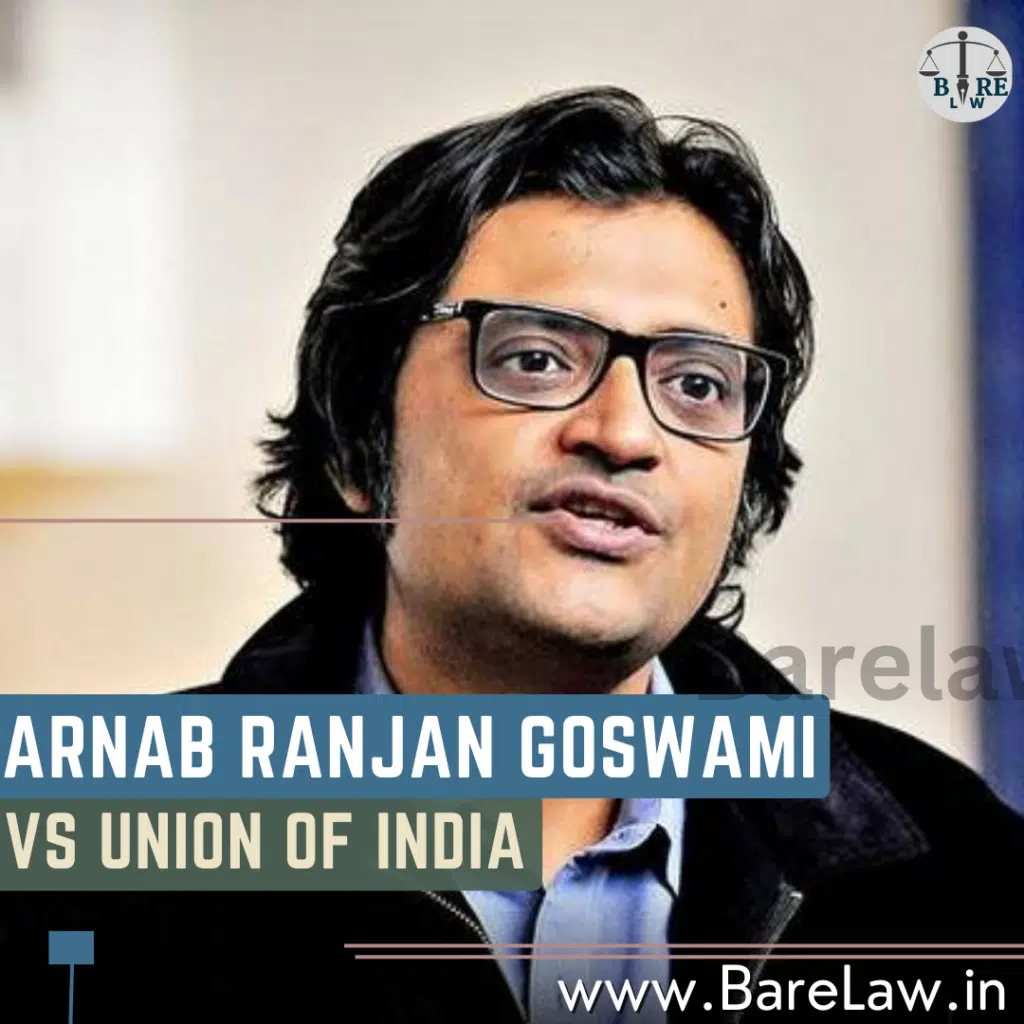
Introduction, Arnab Ranjan Goswami v. Union of India
The case of Arnab Ranjan Goswami v. Union of India marks a watershed moment in the annals of Indian jurisprudence, highlighting the perennial tussle between state authority and journalistic freedom.
Key Legal Issues
– Freedom of Speech and Expression: The case pivoted on the right to freedom of speech versus the state’s claim of legal proceedings.
– Pre-trial Detention: Goswami’s arrest was criticized for alleged procedural flaws, spotlighting the need for lawful detention.
– Rule of Law: The case brought to light potential political motivations behind legal processes.
Legal Proceedings
– Arrest and Bail Proceedings: Goswami’s arrest on November 4, 2020, sparked national outrage. His bail journey went from the Sessions Court to the Bombay High Court and finally to the Supreme Court, which granted him bail, underscoring the sanctity of personal liberty.
– Supreme Court’s Stand: Affirmed personal liberty and presumption of innocence, setting a significant legal precedent.
Significance of the Case
– Protection of Fundamental Rights: Reaffirmed by the judiciary, especially concerning personal liberty and free speech.
– Media Freedom: The case underscored the challenges faced by journalists and the necessity of a free press.
– Rule of Law and Due Process: Stressed the importance of legal fairness and warned against the political targeting of individuals.
– Public Discourse and Legal Precedent: Influenced public opinion on governmental accountability and established a legal benchmark for future cases.
Conclusion
The resolution of Arnab Ranjan Goswami v. Union of India fortified the judiciary’s role in safeguarding democratic values and underscored the importance of media freedom in society. It serves as a beacon for future legal interpretations in the domain of personal liberty and media rights.



